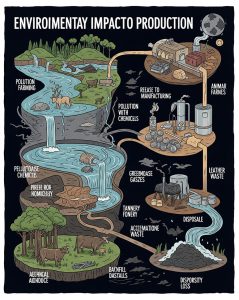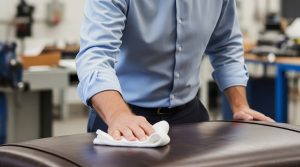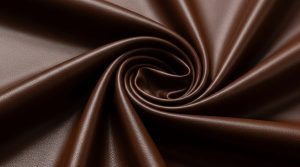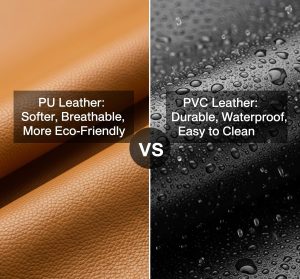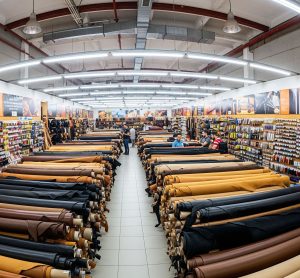
Feasibility and Process
Reupholstering a leather sofa with fabric is a viable option for updating your furniture. Professionals specialize in this transformation, ensuring the sofa retains its structure, while DIY enthusiasts can attempt it with the right tools and guidance. The process starts with assessing the sofa’s frame and springs for damage, followed by removing the leather, repairing any issues, and then measuring and attaching the new fabric. This can give your sofa a fresh, personalized look, especially if you choose from the wide range of fabric colors and patterns available.
Cost and Considerations
The cost can range from $500 for a simple reupholstery to $4500 for larger or complex designs, depending on factors like sofa size, fabric type, and whether you hire a professional. Fabric offers a softer, cozier feel than leather, which is an unexpected benefit for colder climates, but it may not last as long and could need more maintenance, such as professional cleaning for certain types. Consider your lifestyle and how much wear the sofa will endure when choosing fabric.
Alternatives
If reupholstering isn’t suitable, options include using slipcovers for a quick change without permanent alterations or buying a new sofa, especially if the frame is damaged. Partial reupholstery, focusing on worn areas like cushions, is another cost-effective alternative.
Detailed Analysis of Reupholstering Leather Sofas with Fabric
This detailed analysis explores the feasibility, process, considerations, and alternatives for reupholstering a leather sofa with fabric, providing a comprehensive guide for homeowners looking to refresh their furniture. The discussion is informed by various insights into upholstery practices, costs, and maintenance, ensuring a thorough understanding of the topic.
Introduction and Background
Reupholstering furniture is a popular way to extend the life of beloved pieces, and the question of whether a leather sofa can be reupholstered with fabric is common among homeowners seeking a change. Leather sofas, known for their durability and classic appeal, may show wear over time or no longer fit a room’s aesthetic. Fabric offers a softer, more customizable alternative, and this analysis will cover whether such a transformation is possible, how it’s done, and what to consider before proceeding.
The process is not only about aesthetics but also about sustainability, as reupholstering can prevent perfectly good furniture from ending up in landfills. Given the current time, 05:05 AM PDT on Wednesday, April 9, 2025, this topic remains relevant as homeowners continue to seek cost-effective and eco-friendly home improvement solutions.
Feasibility: Can It Be Done?
Yes, it is feasible to reupholster a leather sofa with fabric, and this is a service offered by many professional upholstery businesses. These experts can transform leather furniture into fabric-covered pieces, ensuring the sofa’s structural integrity is maintained. For instance, some services highlight their ability to add new quality foams to reinforce seating areas before recovering with fabric, offering hundreds of designer fabric options in various colors and effects.
For those inclined towards DIY, it is also possible, especially for sofas with straight lines, which are easier for beginners. Guides suggest that with tools like a staple gun, screwdriver, and heavy-duty scissors, individuals can remove the old leather and attach new fabric, though patience and skill are required. However, not all leather sofas are ideal candidates; high-quality sofas with sturdy frames and good spring systems are best, while lower-quality or damaged frames may not justify the cost. Consulting a professional can help determine suitability, as they can evaluate the frame and springs for any issues.
The Reupholstery Process: Step-by-Step
The process of reupholstering a leather sofa with fabric involves several detailed steps, which can be handled by professionals or attempted DIY, depending on skill level. Here’s a breakdown:
- Assessment: Begin by checking the sofa’s condition. Ensure the frame is sturdy, springs are supportive, and padding isn’t excessively worn. This step is crucial to determine if reupholstering is worth the investment.
- Removal of Old Upholstery: Carefully remove the existing leather covering, using tools like a flat-head screwdriver to extract staples without damaging the frame. This requires precision to preserve the underlying structure.
- Repair and Reinforcement: Inspect and repair any damaged parts, such as replacing worn foam cushions or reinforcing springs. Some services mention adding new quality foams to enhance comfort and durability.
- Measuring and Cutting New Fabric: Accurate measurements are essential. Each section—cushions, arms, backrest—must be measured, accounting for seams and overlaps. For sectionals, fabric requirements can range from 28 to 45 yards, depending on dimensions.
- Attaching the New Fabric: The new fabric is stapled or tacked onto the frame, ensuring it’s taut and smooth. Professionals use techniques to avoid wrinkles, especially on curved surfaces, and may add decorative elements like piping or buttons.
- Finishing Touches: Ensure all staples are hidden, and add any final decorative details to enhance the sofa’s appearance.
Reassembly: If parts were disassembled, reassemble them, ensuring everything is secure and the sofa is ready for use.
This process, while detailed, can transform a leather sofa into a fabric-covered piece that feels brand new, offering a personalized touch to your living space.
Considerations: Cost, Durability, Aesthetics, and Maintenance
Before proceeding, several factors must be considered to ensure the decision aligns with your needs and budget:
- Cost: The cost of reupholstering varies widely, typically ranging from $500 to $2000 for a standard sofa, but can reach $4500 for larger or complex designs like sectionals or high-end leather sofas. Factors influencing cost include the sofa’s size, the type of fabric chosen (e.g., performance fabrics for durability), and whether you hire a professional. Some services offer free, no-obligation quotes, making it essential to get a personalized estimate. DIY projects can reduce costs but require investment in tools and materials.
- Durability: Leather is known for its longevity, but fabric can also be durable with the right choice. Performance fabrics, designed to resist stains, pet hair, and wear, are ideal for high-traffic areas. However, some fabrics may not last as long as leather, so consider the sofa’s usage when selecting material.
- Aesthetics: Fabric offers a vast array of colors, patterns, and textures, far exceeding leather’s options. This allows for customization to match home decor, whether you prefer bold patterns or neutral tones. This versatility is an unexpected benefit, as it enables homeowners to create a unique statement piece.
- Comfort: Fabric can feel softer and more inviting than leather, especially in colder climates where leather may feel cold to the touch. This makes fabric a preferable choice for cozy living spaces, particularly during winter months.
- Maintenance: Different fabrics require varying levels of care. Some are machine washable or easy to spot clean, while others may need professional cleaning. Consider your lifestyle and willingness to maintain the fabric when making your choice.
These considerations ensure that the reupholstery aligns with both aesthetic preferences and practical needs, making it a worthwhile investment for many homeowners.
Alternatives: When Reupholstering Isn’t the Best Option
If reupholstering isn’t suitable—due to cost, time, or the sofa’s condition—there are several alternatives to explore:
- Slipcovers: These are removable covers that can change the sofa’s look without permanent alterations. They’re a quick, affordable option, available in various styles and fabrics, ideal for seasonal decor changes or temporary updates.
- Partial Reupholstery: If only certain parts, like cushions or arms, are worn, reupholstering just those sections can be more cost-effective. This approach refreshes the sofa without the full expense of complete reupholstery.
- Buying New: If the sofa is beyond repair or you’re seeking a significant upgrade, purchasing a new sofa might be best. Look for sales or consider second-hand options to save money while getting a high-quality piece.
These alternatives provide flexibility, ensuring homeowners can find a solution that fits their budget and needs, especially if the frame is damaged or reupholstering costs are prohibitive.
Conclusion and Recommendations
In conclusion, reupholstering a leather sofa with fabric is not only possible but also a practical way to update furniture, offering customization, comfort, and sustainability. The process involves assessing the sofa, removing the leather, repairing as needed, and attaching new fabric, with costs typically ranging from $500 to $4500. Fabric’s versatility in aesthetics and softer feel are unexpected benefits, though maintenance and durability should be considered. Alternatives like slipcovers or buying new provide options if reupholstering isn’t feasible.
For those unsure, consulting a professional upholsterer for a free quote can clarify costs and suitability, ensuring the decision aligns with your specific needs. This approach not only refreshes your living space but also extends the life of your furniture, making it a rewarding and eco-friendly choice.



